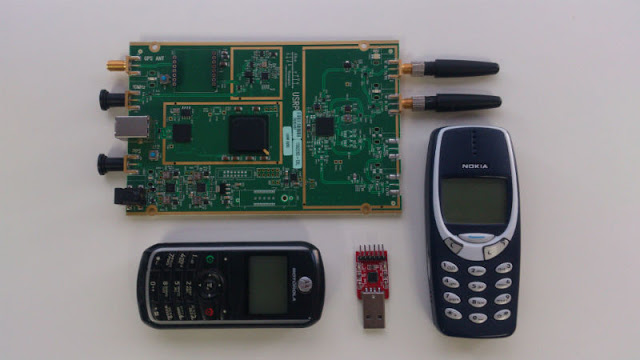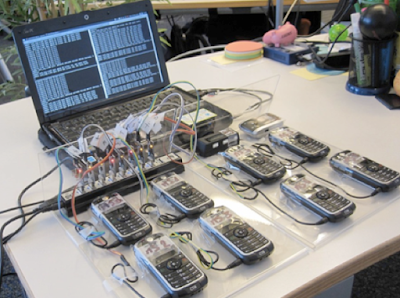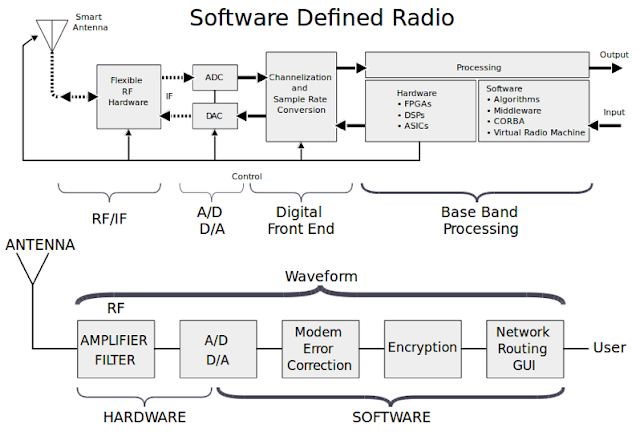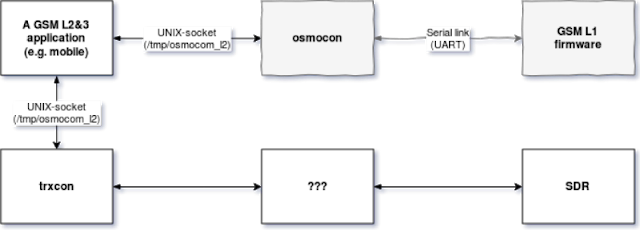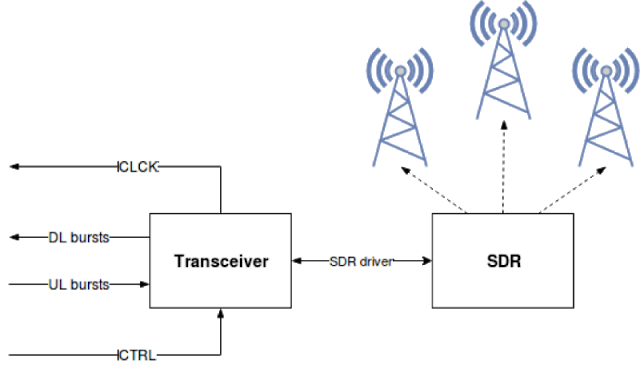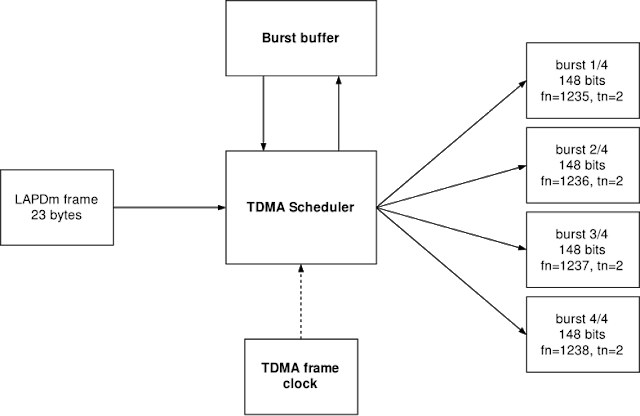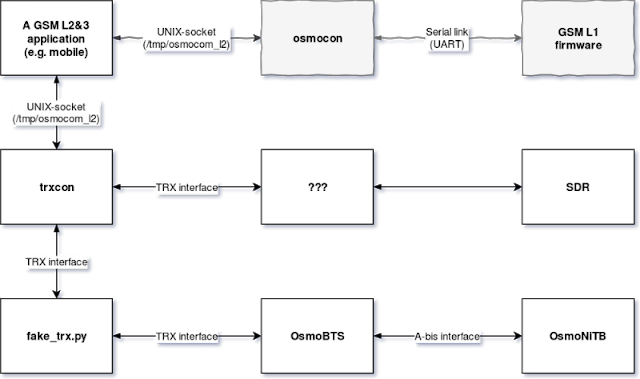The smartphones so familiar to most of us contain an entire communication module separate from the main CPU. This module is what makes a "smartphone" a "phone." Regardless of whether the phone's user-facing operating system is Android or iOS, the module usually runs a proprietary closed-source operating system and handles all voice calls, SMS messages, and mobile Internet traffic.
Of course, open-source projects are more interesting to security researchers than closed-source ones. The ability to look under the hood and see how a particular program component works makes it possible to find and fix errors, plus verify that undocumented functionality is not present. As a pleasant bonus, access to source code helps novice developers to learn from colleagues and make contributions of their own.
OsmocomBB project
These considerations inspired creation of the Open Source Mobile Communications (Osmocom) project all the way back in 2008. Initially, the developers' attention was focused on OpenBSC, a project for running a self-contained cellular network on hefty commercial base stations. OpenBSC was first presented in 2008 at the Chaos Communication Congress annual conference.
Over time, Osmocom branched out into more projects. Today it serves as the umbrella for dozens of initiatives, one of which is OsmocomBB—a free and open-source implementation of the mobile-side GSM protocol stack. Unlike its predecessors, such as TSM30, MADos for Nokia 33XX, and Airprobe, OsmocomBB caught the attention of researchers and developers, and continues to be developed.
OsmocomBB was initially envisioned as a full-fledged firmware for open-source cell phones, including a GUI and other components, focusing on an alternative implementation of the GSM protocol stack. However, this idea did not catch on among potential users, so OsmocomBB today serves as an indispensable set of research tools and learner’s aid for those new to GSM.
With OsmocomBB, researchers can assess the security of GSM networks and investigate how the radio interface (Um interface) functions on cellular networks. What kind of encryption is used, if any? How often are encryption keys and temporary subscriber IDs changed? What is the likelihood that a voice call or SMS message will be intercepted or forged by an attacker? OsmocomBB allows quickly finding the answers to these and many other questions. Some of the many other uses include launching a small GSM base station, investigating the security of SIM cards, and sniffing traffic.
Similar to the case with the Aircrack-ng project and network cards, OsmocomBB's primary hardware platform consists of mobile phones based on the Calypso chipset. Generally speaking, these are Motorola C1XX phones. At the start of OsmocomBB development, it was decided to use the phones in the interest of saving time—otherwise, the process of designing and manufacturing new equipment could drag on indefinitely. Another reason was that some parts of the source code and specifications for the Calypso chipset had been leaked to the Internet, which gave a head start to reverse engineering of the firmware and subsequent development.
However, this expedient came at a price. Phones based on the Calypso chipset are no longer produced, forcing researchers to search for secondhand models. Moreover, some parts of the current implementation of the GSM stack physical layer are heavily based on a Digital Signaling Processor (DSP). The code of this processor is proprietary and not fully known to the public. Both factors create roadblocks for OsmocomBB, reducing its potential and increasing the barrier to entry for developers and project users at large. As just one example, implementing GPRS support is impossible without changing the DSP firmware.
Breathing in new life with a new hardware platform
The OsmocomBB software consists of a number of applications, each of which has a specific purpose. Some applications run directly on a computer in any UNIX-like environment. Other applications are provided in the form of firmware that must be loaded on to the phone. The applications interact through the phone serial port, which is combined with the headset connector. In other words, an unremarkable TRS connector (2.5-mm microjack) can be used for transmitting both sound and data! Similar technology is used in smartphones in order to support headphone remotes, selfie sticks, and other accessories.
Lack of other interfaces (such as USB) and the need to use a serial port also impose certain limitations, particularly on the data transfer rate. The low bandwidth of the serial interface limits the ability to sniff traffic and run a base station. Moreover, a ready-made cable for connecting the phone to USB is difficult to find; in most cases this cable must be DIY'ed, raising the barrier to entry higher still.
Eventually, the combination of these difficulties gave rise to the idea of switching to a different hardware platform that would remove these software and hardware limits. Such a platform should be available to everyone, in terms of both physical availability and price. Due to rapid growth in popularity and availability, Software-Defined Radio (SDR) technology perfectly meets these requirements.
The essence of SDR is to develop general-purpose radio equipment not tied to a specific communication standard. Thanks to this, SDR has become very popular both among radio amateurs and manufacturers of commercial equipment. Today, SDR is actively used in cellular communications for deployment of GSM, UMTS, and LTE networks.
That said, the idea of using SDR to develop and launch a GSM mobile phone with OsmocomBB is not new. Osmocom developers worked on this but abandoned their efforts. A Swiss laboratory also attempted to do so, unfortunately never advancing beyond the proof-of-concept stage. Nonetheless, we decided to resume work in this direction by implementing support for a new SDR-based hardware platform for OsmocomBB. The platform is identical to the Calypso chipset in terms of backward compatibility, while also being more open to modifications.
The remainder of this article will describe the process of developing the new platform, the problems encountered, and the solutions we found. In the conclusion, we will share our results, limitations of the current implementation, ideas for further development, and advice for how to get OsmocomBB working on SDR.
Project history
As mentioned already, OsmocomBB includes two types of applications: some run on a computer and others are loaded on to the phone as part of alternative firmware. The both sides interact via osmocon, a small program that connects them to each other through the serial port. Interaction occurs using the simple L1CTL (GSM Layer 1 Control) binary protocol, which supports only three types of messages: request (REQ), conformation (CONF), and indication (IND).
We decided to preserve this structure, as well as the protocol itself, for transparent compatibility with existing applications. This resulted in a new application, trxcon (short for "transceiver connection"), which serves as a bridge among high-level applications (such as mobile and ccch_scan) and the transceiver (a separate application that manages SDR).
The transceiver is a separate program that performs low-level tasks of the GSM physical layer, such as time and frequency synchronization with the network, signal detection and demodulation, and modulation and transmission of the outgoing signal. Among ready-made solutions, there are two suitable projects: OsmoTRX and GR-GSM. The first is an improved modification of the transceiver from the OpenBTS project (it is used by Osmocom projects for running base stations), while the second provides a set of GNU Radio blocks for receiving and decoding GSM signals.
Despite the completeness of its implementation and out-of-the-box support for signal transmission, OsmoTRX with its cocktail of C and C++ will not please the developer who values clean, readable source code. For example, altering a few lines of code in OsmoTRX may require studying the entire class hierarchy, while GR-GSM offers incomparable modularity and freedom of modification.
Nevertheless, OsmoTRX still has a number of advantages. The most important of these are performance, low resource requirements, and small size of executable code and dependencies. All this makes the project fairly friendly to embedding on systems with limited resources. By comparison, GNU Radio looks positively gluttonous. Development targeted OsmoTRX exclusively at first, but ultimately the choice was made to use GR-GSM as transceiver.
To ensure backward compatibility, a TRX interface was implemented in trxcon. This interface is also used in the OsmoTRX, OsmoBTS, and OpenBTS projects. The interface uses three UDP sockets for each connection; each socket has a separate purpose. One of them is the CTRL interface, which allows controlling the transceiver (setting frequency, gain, and so on). The second one is called DATA—as the name implies, it exchanges information that needs to be transmitted (Uplink) or that has already been received (Downlink). The last socket, CLCK, is used to pass on timestamps from the transceiver.
We also implemented a new application, grgsm_trx, for GR-GSM. The application initializes the basic set of blocks (flow graph) and provides the TRX interface for an external control application, which in our case is trxcon. The flow graph initially consisted only of blocks for reception, that is, detection and demodulation of bursts—the smallest information pieces of the GSM physical interface. Every burst that is output by the demodulator is a bit sequence consisting mainly of a payload and midamble that allows the receiver to synchronize with the transmitter but (unlike a preamble) is located in the middle.
At this point in development, high-level applications such as ccch_scan were already able to set the SDR to a certain frequency, launch the synchronization process with the base station, and demodulate the received signal. However, these initial successes were accompanied by difficulties. Since most of the implementation of the OsmocomBB physical layer previously relied on the phone DSP, encoding and decoding of packets according to GSM 05.03 specifications was not implemented separately—it was performed with proprietary code.
The newly implemented transceiver would pass on bursts to the upper layers of the implementation, while the current implementation of the upper layers was expecting LAPDm byte packets (mostly 23 bytes each) from the physical layer. Moreover, the transceiver needed accurate Time Division Multiple Access (TDMA) with the base station, even though high-level applications were completely unaware and transmitted outgoing packets when needed.
To fix this, we implemented a TDMA scheduler that accepts LAPDm packets from high-level applications, encodes them into bursts, and passes them to the transceiver, determining the transmission time using frame and timeslot numbers. The scheduler reassembles bursts arriving from the transceiver, decodes them and passes them on to the upper layers. According to GSM 05.03, coding and decoding involve, respectively, adding redundant data to information bits and then recovering LAPDm packets from those padded sequences by using the Viterbi algorithm.
It may sound confusing, but a similar process of encoding and decoding LAPDm packets takes place both on the mobile phone and on the base station. Fortunately, a free open-source implementation already existed, in the form of Osmocom Base Transceiver Station (OsmoBTS). This project's code related to GSM 05.03 was reworked, documented, and moved to libosmocore (the Osmocom project core) as a child library called libosmocoding. Thanks to this, many projects—including OsmocomBB, GR-GSM, and OsmoBTS—can all take advantage of this implementation without duplicating code. The TDMA scheduler itself was also implemented in a way similar to OsmoBTS, but taking mobile phone workings into account.
After this, receiving was successful! But the most important feature for the functioning of a mobile phone—data transmission—was still missing. The problem was that initially there were no blocks in GR-GSM for modulating and transmitting the signal. Fortunately, project author Piotr Krysik supported implementation of this functionality and contributed to collaboration for this purpose.
To avoid wasting time while data transmission was being worked on, we came upon a temporary workaround. As it turned out later, this workaround was a very useful solution in its own right—a set of tools for emulating the transceiver as a virtual Um interface. Since both OsmocomBB and OsmoBTS now support the TRX interface, the projects can be easily interconnected: each Downlink burst from the OsmoBTS is passed on to the trxcon application, while every Uplink burst from OsmocomBB is passed on to OsmoBTS. A simple application written in Python, called FakeTRX, allowed running a virtual GSM network without any equipment!
Thanks to this set of tools, a large number of bugs in implementation of the TDMA scheduler were subsequently found and fixed. Support for dedicated channels, such as SDCCH and TCH, was also implemented. The first type of GSM logical channels is mainly used for sending SMS messages, USSD requests and (sometimes) establishing voice calls. The second type is used for voice transmission during a call. The GSM Audio Packet Knife (GAPK) project helped to provide basic support in OsmocomBB for recording and encoding, as well as decoding and reproduction of sound, since this task was previously performed by the phone DSP.
Meanwhile, Piotr Krysik developed and successfully implemented all the missing blocks necessary for signal transmission. Since GSM uses Gaussian Minimum Shift Keying (GMSK) modulation, he used the existing GMSK Modulator block from GNU Radio. However, the main problem was to ensure synchronization with the base station. Each burst must be transmitted on time, that is to say, within the timeslot allocated by the base station. Timing buffers in the TDMA system allow compensating for small discrepancies. The situation was complicated by the lack of an accurate clock generator in most SDR devices, due to which the whole system would tend to drift.
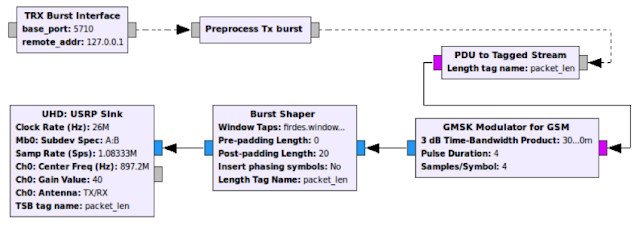
The solution we found involves using the hardware clock of SDR devices, such as those from USRP, based on which incoming bursts are stamped with the current hardware time. By comparing these stamps and the current frame number decoded from the SCH burst, it is possible to perform adjustment and set the exact time for transmitting outgoing information. The only problem was that standard GNU Radio blocks designed for interaction with SDR do not support temporary stamps, so we had to replace the blocks with UHD Source and Sink, restricting support to USRP devices.
Results
Thanks to this work, we managed to build a bridge of sorts between OsmocomBB and SDR transceivers functioning through the Universal Hardware Driver (UHD). We implemented the main components of the GSM physical layer that are necessary for high-level applications, such as ccch_scan, cbch_scan, and mobile. All our work was made available to the public in the OsmocomBB main repository.
Now, by using SDR as a hardware platform for OsmocomBB, it has become possible to run a completely transparent GSM protocol stack that is free of proprietary components that have closed source code, such as a DSP of Calypso-based phones, while also allowing on-the-fly debugging and modification of each component. In addition, developers and researchers gain a number of opportunities, for example:
- Running the network and phone in other frequency bands (such as 2.4 GHz)
- Integrating alternative audio codecs (for example, Speex or Opus)
- Implementing the GPRS / EGPRS stack
The tools for creating a virtual Um interface, which we referred to previously, were also published in the project repository. These tools are useful both for experienced developers (for example, for simulating load levels for various components of cellular network infrastructure and testing their stability) and for novice users, who can begin studying GSM in practice without the need to search for and purchase equipment.
However, the current implementation of the new hardware platform for OsmocomBB still contains certain limitations, most of which come from the SDR technology itself. For example, most available SDR devices, such as USRP, UmTRX, and LimeSDR, have a relatively small transmit power when compared to the maximum transmit power of ordinary phones. Another implementation gap is lack of support for frequency hopping, which enables the subscriber to simultaneously communicate with multiple base stations at different frequencies, which reduces interference and complicates signal interception. Frequency hopping is implemented on the networks of most operators; in addition, GSM specifications define this technology as mandatory support for every phone. While the problem with signal power can be solved with the help of amplifiers or simply by using a laboratory base station, implementing frequency hopping will require much more effort.
Further development plans include:
- Supporting physical (non-virtual) SIM cards
- Introducing support for a wider range of SDR devices
- Supporting Circuit-Switched Data (CSD)
- Implementing an embedded transceiver based on OsmoTRX
- Supporting GPRS / EDGE
The project was also presented at 34th annual Chaos Computer Club conference:
Conclusion: tips for getting started with your own SDR
Here is our advice for how to run GSM on your own SDR. To start with, we suggest experimenting with the virtual Um interface with the help of our TRX Toolkit:In addition to OsmocomBB, you will need a complete entire set of central network infrastructure components from Osmocom: either OsmoNiTB (Network in The Box) or all components separately, including BTS, BSC, MSC, MGW, and HLR. Instructions for compiling source code can be found on the project website, or you can use ready-made packages for Debian, Ubuntu, or OpenSUSE.
To test the implementation on your own network, you can use any available implementation of the GSM network stack, such as Osmocom, OpenBTS, or YateBTS. Launching your own network requires a separate SDR device or a commercial base station, such as nanoBTS. Because of the described limitations and other possible flaws, we highly recommended to not test the project on actual operator networks!
To build the transceiver, you will need to install GNU Radio and compile a separate branch of the GR-GSM project from source code. For details on installing and using the transceiver, visit the Osmocom project website.
Good luck!
Author: Vadim Yanitskiy, Positive Technologies
Article Link: http://blog.ptsecurity.com/2018/03/how-to-assemble-gsm-phone-based-on-sdr.html
